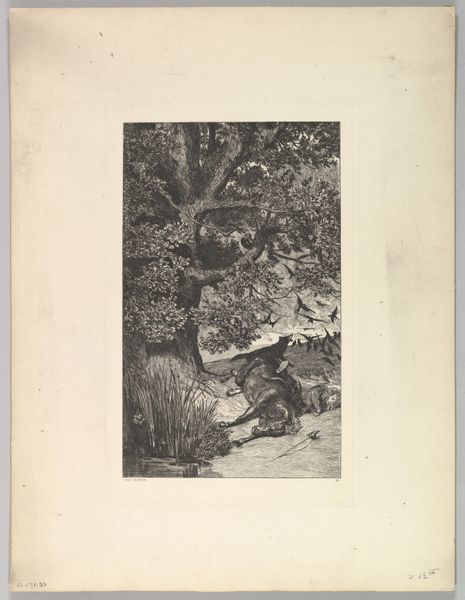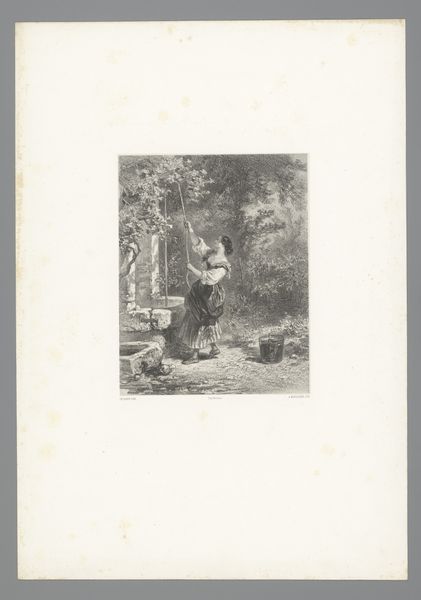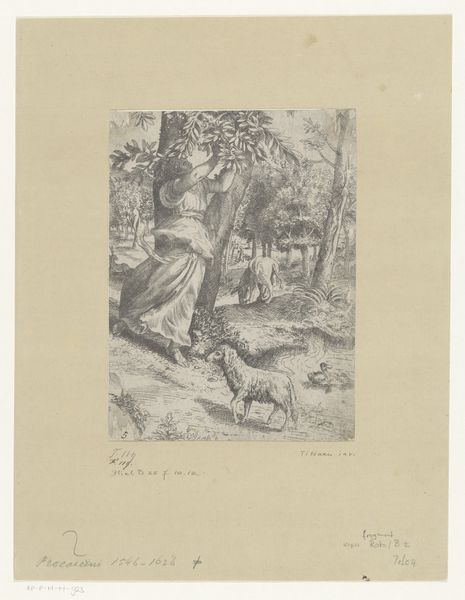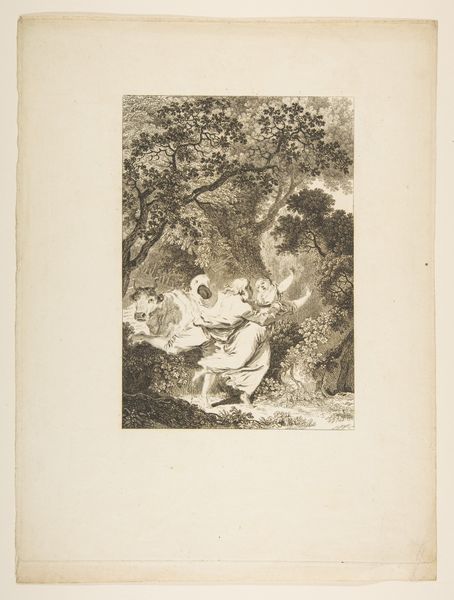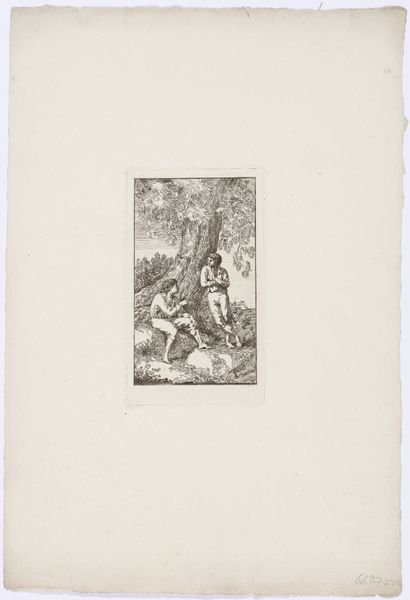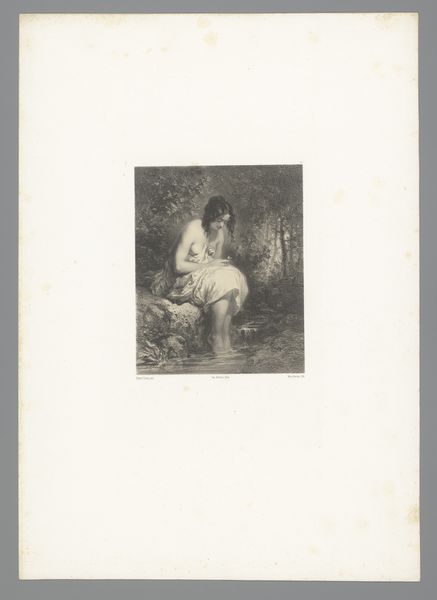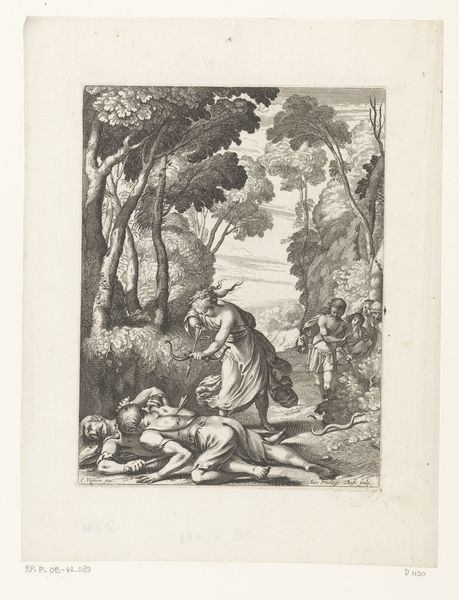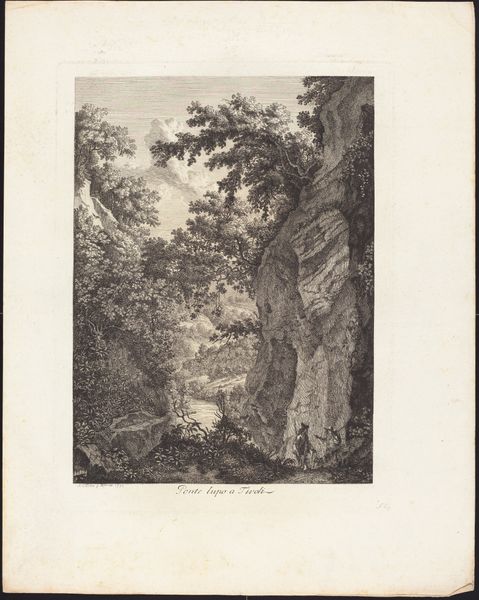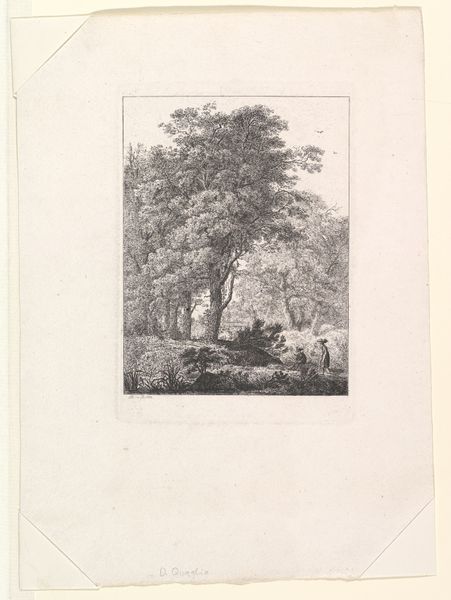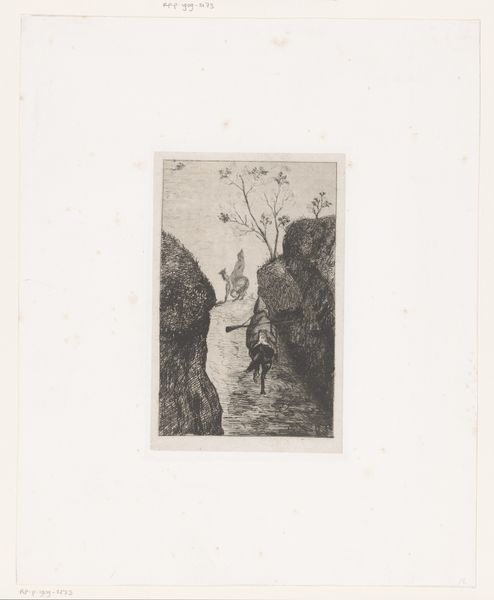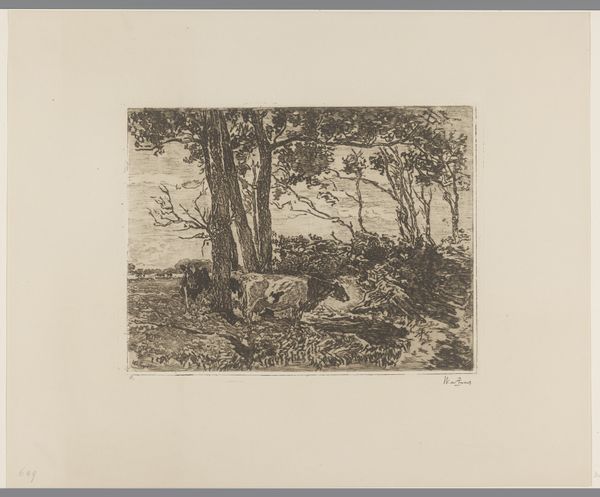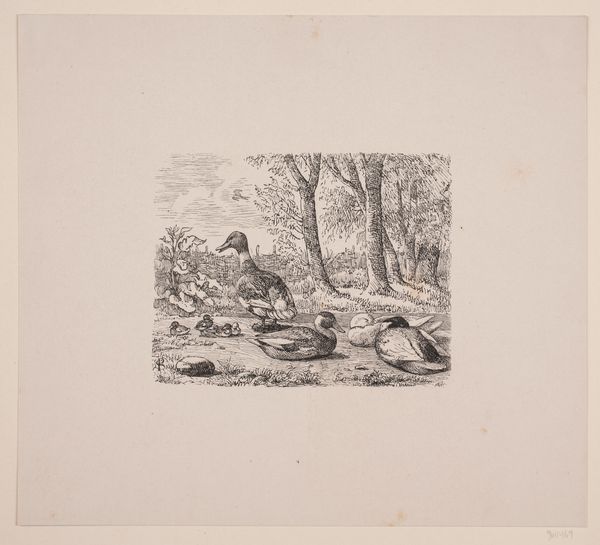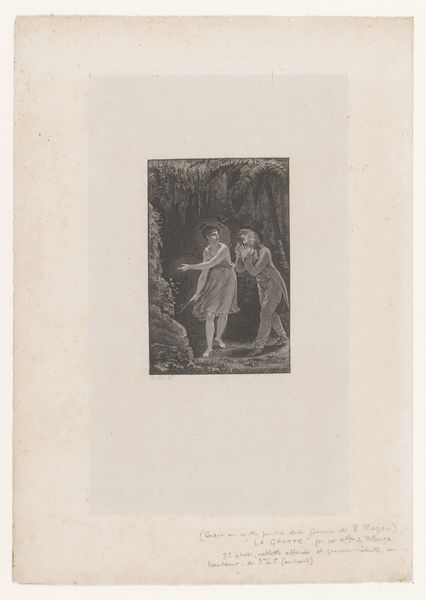
Simplicius am Grabe des Einsiedlers, from the series Intermezzi 1870 - 1920
0:00
0:00
Dimensions: Plate: 11 15/16 × 10 9/16 in. (30.4 × 26.8 cm) Sheet: 19 3/8 × 16 in. (49.2 × 40.6 cm)
Copyright: Public Domain
Curator: The somber yet intensely detailed imagery in front of us is by Max Klinger. This graphite print is called "Simplicius am Grabe des Einsiedlers", or "Simplicius at the Hermit's Grave", from the series *Intermezzi*, created sometime between 1870 and 1920. What's your initial take? Editor: Desolate. The figure kneeling looks utterly defeated, yet there's a stillness about him that speaks of acceptance or maybe even…understanding? It's a stark image, heightened by the almost feverish level of detail in the landscape. Curator: Simplicius is a recurring figure, often interpreted as embodying innocence thrust into a world of experience. Klinger's placement of him here, amidst the decaying beauty of the grave and the surrounding forest, invites reflection on the transience of life. The hermit’s grave itself takes on the role of memento mori. Editor: Memento mori, yes, but there is also a potent questioning of authority. The figure looks impoverished and displaced. One cannot but help imagine them stripped of resources and societal support; that could indicate something deeply cynical about the nature of established religious systems. What do you make of the visual weight of the overgrowth in the lower half? Curator: The brambles and lush weeds act almost like a physical barrier, symbolizing both the untamed wildness of nature and perhaps the overwhelming nature of grief itself. But I see something more affirmative here, a potential for rebirth and renewal. The density of the undergrowth hints that death fertilizes life and a promise of eventual growth and resurgence. The light delicately touches parts of the surrounding scene… Editor: Perhaps. But consider Klinger's position in a society wrestling with the hypocrisy and spiritual bankruptcy of its institutions. Couldn’t that visual 'barrier' be read as social barriers built on wealth or gender—privileges which isolate individuals from true spiritual connection? Simplicius at the Hermit's Grave may represent a poignant recognition that institutional failings render sincere engagement difficult to reach. Curator: Your interpretation reframes Simplicius's plight as broader societal commentary rather than individual suffering—compelling indeed. I recognize that your interpretation unearths more immediate social critiques. The conversation is revealing. Editor: Art reveals itself over time, through varied perspectives. That it sparks these dialogues about society, spirituality, and survival, across a century—that is the real achievement.
Comments
No comments
Be the first to comment and join the conversation on the ultimate creative platform.
